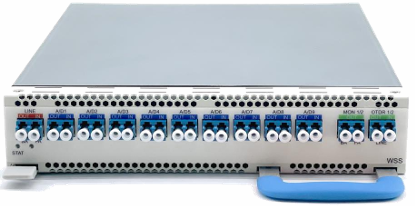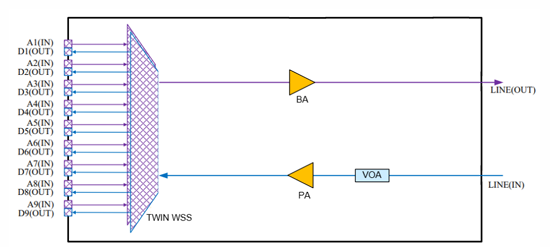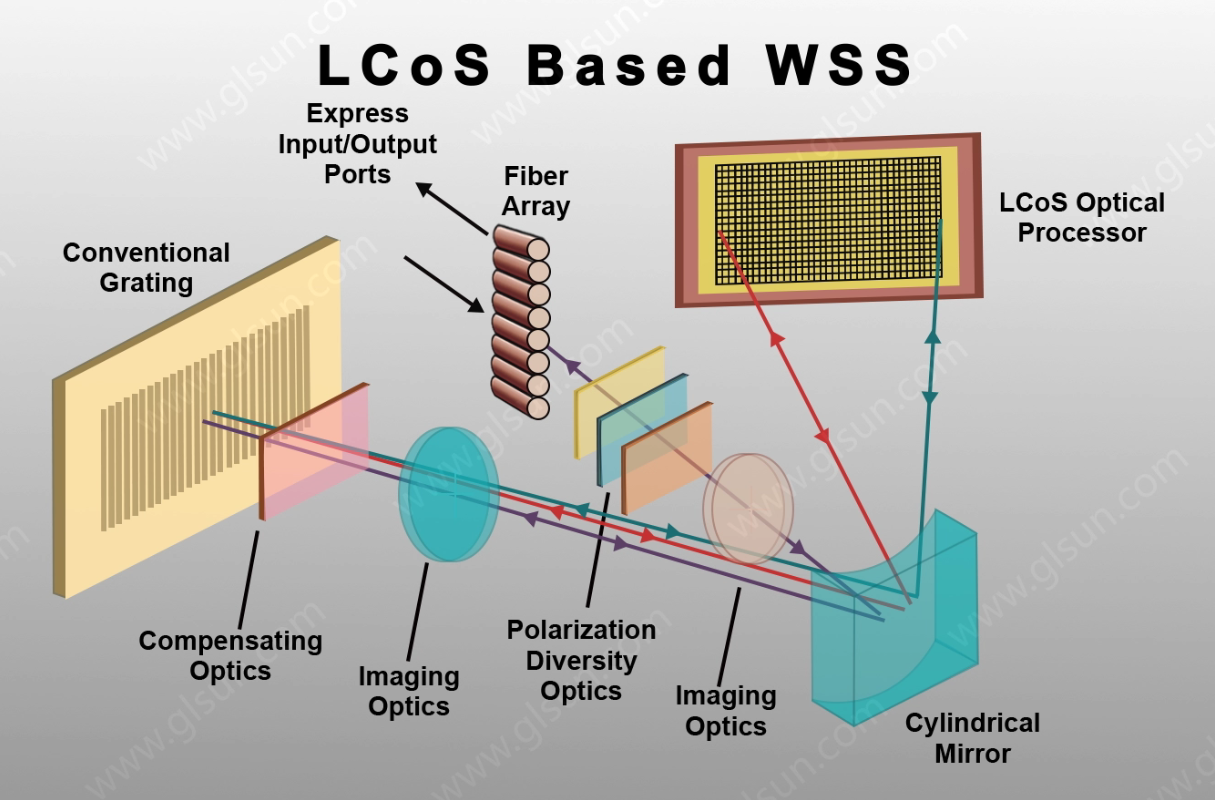What Is a Wavelength Selective Switch (WSS)? How It Powers Modern Optical Networks
1. Composition of an Optical Isolator Types of Optical Isolators
Wavelength Selective Switch (WSS): How It Works & Applications in Optical Networks
As optical communication systems evolve toward higher bandwidth, flexibility, and intelligence, the Wavelength Selective Switch (WSS) has emerged as a core enabling technology for next-generation all-optical networks. At GLSun Technology, we design and manufacture high-performance optical switching components that power advanced WSS modules used in ROADM systems, data centers, and telecom infrastructure.
In this article, we’ll explore:
✅ The working principle of WSS
✅ Key applications in modern optical networks
✅ How GLSun’s optical switches support WSS development
1. What Is a Wavelength Selective Switch (WSS)?

A Wavelength Selective Switch (WSS) is an advanced optical device that enables dynamic routing, blocking, and attenuation of individual wavelength channels in a dense wavelength division multiplexing (DWDM) system.
Unlike traditional fixed filters or static OADMs, a WSS allows remote, software-controlled reconfiguration of optical paths — making it the backbone of Reconfigurable Optical Add-Drop Multiplexers (ROADMs) and intelligent optical transport networks.
2. How Does a WSS Work?
The operation of a WSS relies on precision optics and programmable switching elements to separate, route, and manage multiple wavelengths within a single fiber.

Basic Working Principle:
Input & Collimation
Incoming multi-wavelength light enters through an input fiber and is collimated into a parallel beam using a lens.
Wavelength Separation
The collimated light passes through a diffraction grating or Arrayed Waveguide Grating (AWG), which spatially separates different wavelengths (e.g., λ₁, λ₂, ..., λₙ).
Spatial Light Modulation
Each separated wavelength is directed to a programmable switching element (such as MEMS mirrors, Liquid Crystal, or LCoS). Based on control signals, these elements steer each wavelength to a specific output port.
Output & Recombination
The selected wavelengths are focused into designated output fibers, enabling flexible add/drop, blocking, or pass-through functionality.
This entire process happens in the optical domain, without converting signals to electrical form — ensuring ultra-low latency and high scalability.
3. Key Switching Technologies in WSS
Several optical switching technologies are used in WSS designs, each with unique advantages:

Technology Description Use Case
MEMS Mirrors Tiny movable mirrors tilt to reflect light to desired ports High reliability, moderate speed
Liquid Crystal (LC) Electrically controlled birefringence changes light path Low power, cost-effective
LCoS (Liquid Crystal on Silicon) Pixel-level control for fine-grained wavelength management High port count, flexible grid
At GLSun, we supply critical optical switch components used in LC and LCoS-based WSS platforms.
4. Applications of WSS in Optical Networks
4.1 Reconfigurable Optical Add-Drop Multiplexing (ROADM)
WSS is the core component in ROADM systems, allowing network operators to:
Remotely add, drop, or route any wavelength
Dynamically reconfigure network topology
Achieve colorless, directionless, contentionless (CDC) operation
This enables agile, software-defined optical networks (SDON) that adapt to traffic demands in real time.
4.2 Wavelength Routing & Conversion
In DWDM systems, WSS enables:
Flexible wavelength assignment
Wavelength conversion via cross-connect routing
Automatic power balancing across channels
This improves spectral efficiency and supports terabit-scale transmission.
4.3 Dynamic Network Reconfiguration
With WSS, operators can:
Respond to failures by rerouting traffic
Balance load during peak usage
Provision new services remotely via software
This reduces OPEX and increases network resilience.
4.4 Optical Sensing & Spectral Analysis
Beyond telecom, WSS is used in:
Optical coherence tomography (OCT) for medical imaging
Environmental sensing with tunable laser sources
LIDAR and scientific instrumentation
Its ability to select and scan specific wavelengths makes it ideal for precision measurement systems.
5. Glsun Technology: Enabling Advanced WSS Solutions
At Glsun Technology, we have over 20 years of experience in designing and manufacturing high-reliability optical switches that serve as building blocks for WSS and other photonic systems.
Our product portfolio includes:
Product Key Features Typical Use in WSS
Manual Optical Switch Simple, reliable, low-loss switching Lab testing, prototype systems
All-Fiber Polarization Switch Low PDL, polarization-maintaining Polarization control in LC-WSS
Magneto-Optic Switch Fast switching (<2ms), high endurance High-speed protection switching
MEMS Optical Switch Compact, scalable (1x2 to 1xN), low power Beam steering in MEMS-WSS
Silicon-Based High-Speed Optical Switch ns-level switching, PIC-compatible Future LCoS/WSS integration
We support global partners in the development of intelligent optical modules, including WSS, EDFA, and integrated photonic circuits.
Why Choose GLSun for WSS Component Supply?
✅ 24+ years in optical component manufacturing
✅ ISO 9001 & IATF 16949 certified production
✅ Customization available (wavelength, connector, packaging)
✅ Samples available within 7 days
✅ Trusted by Huawei, FiberHome, and international research labs
Conclusion: The Future of Optical Networking Starts with WSS
The Wavelength Selective Switch (WSS) is no longer a niche component — it’s a strategic enabler of agile, scalable, and intelligent optical networks. As demand for cloud services, 5G, and AI-driven traffic grows, WSS adoption will continue to rise across metro, core, and data center interconnect (DCI) networks.
At Glsun Technology, we are proud to be a key supplier of high-performance optical switches that empower innovation in WSS and beyond.





 Guanglong S&T Zone, No.8 High-tech Industry Park Chaoyang Road, Guilin ,Guangxi, China
Guanglong S&T Zone, No.8 High-tech Industry Park Chaoyang Road, Guilin ,Guangxi, China  +86-133-4600-8527
+86-133-4600-8527  alan.shizz@glsun.com
alan.shizz@glsun.com